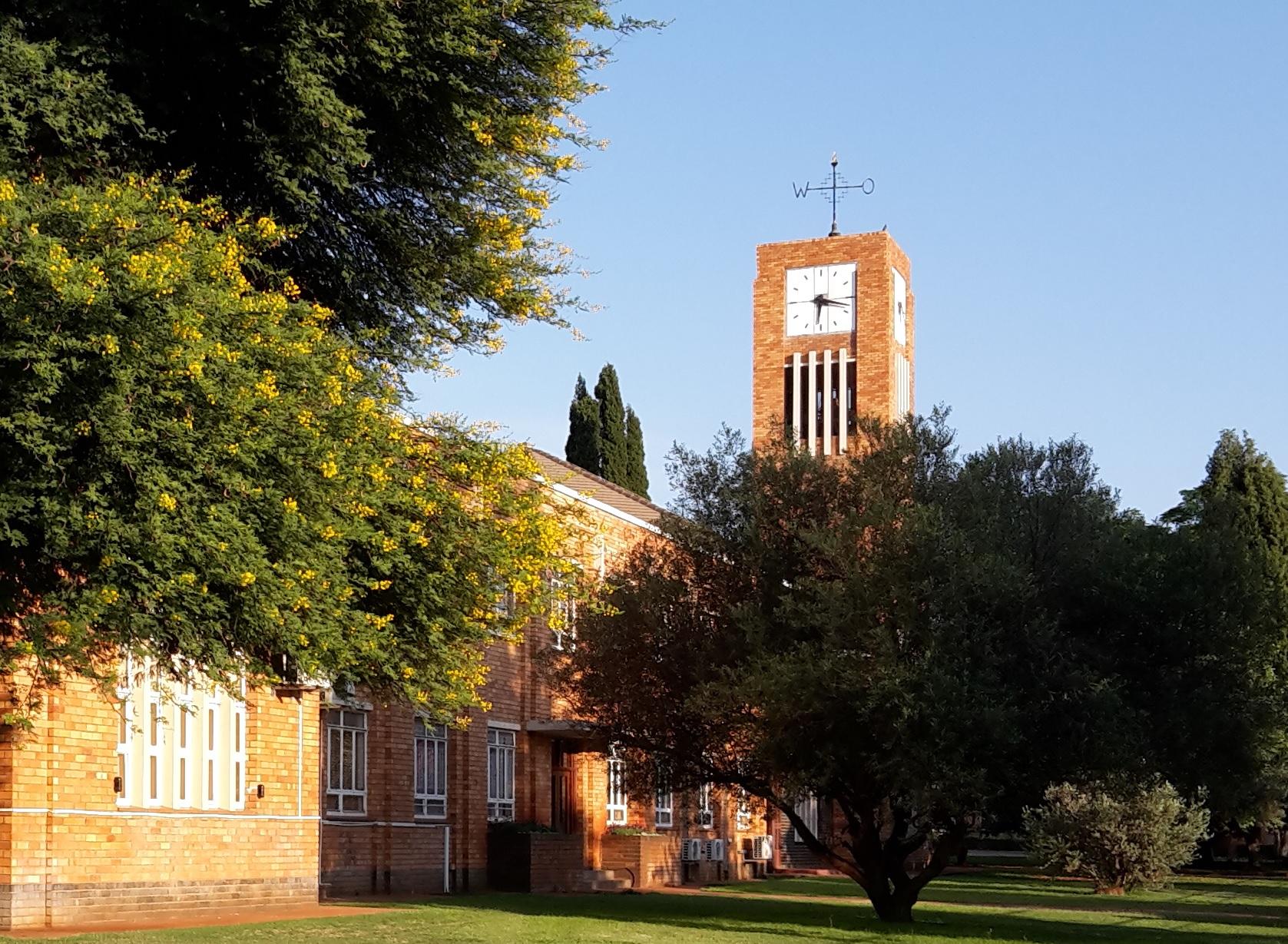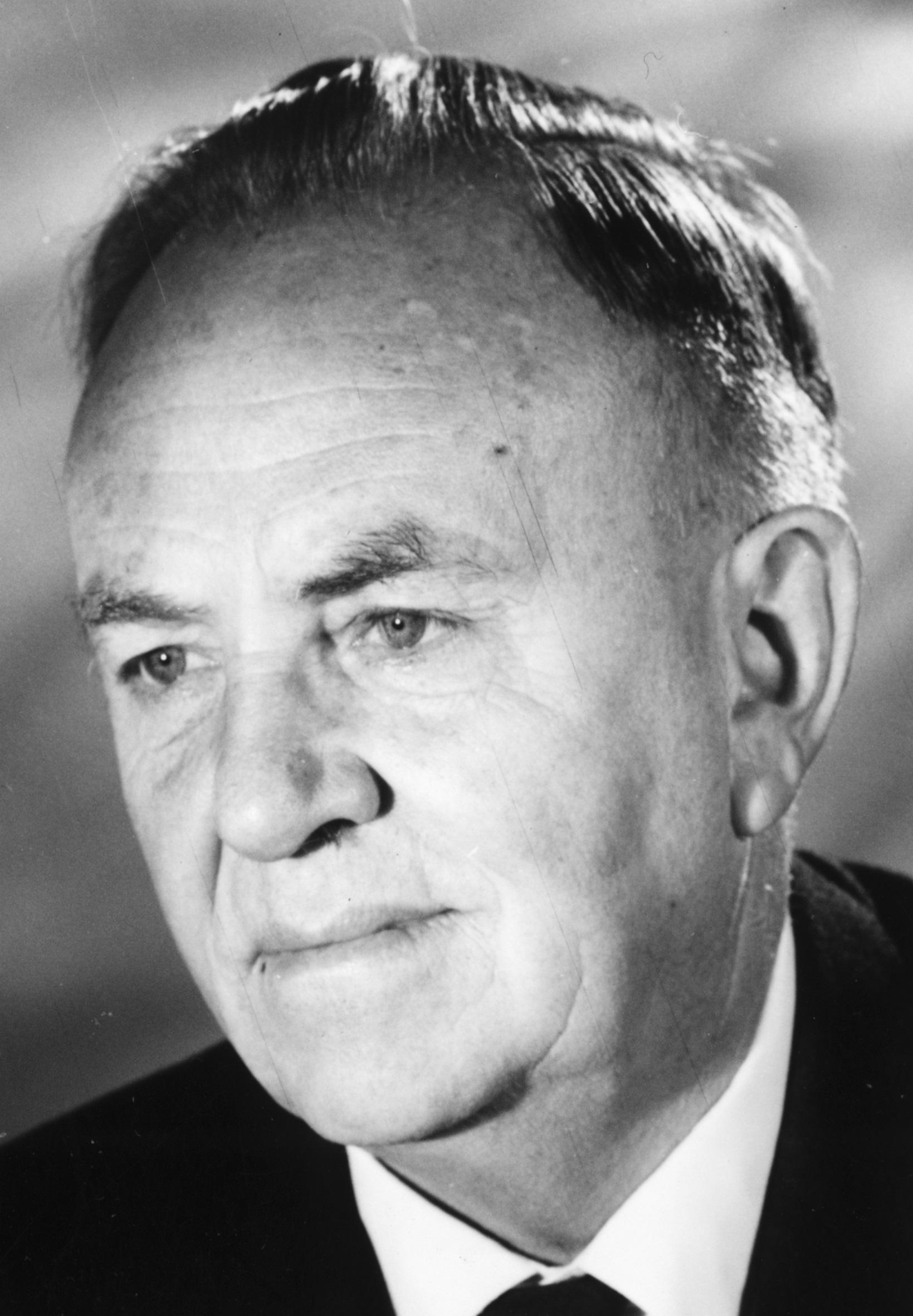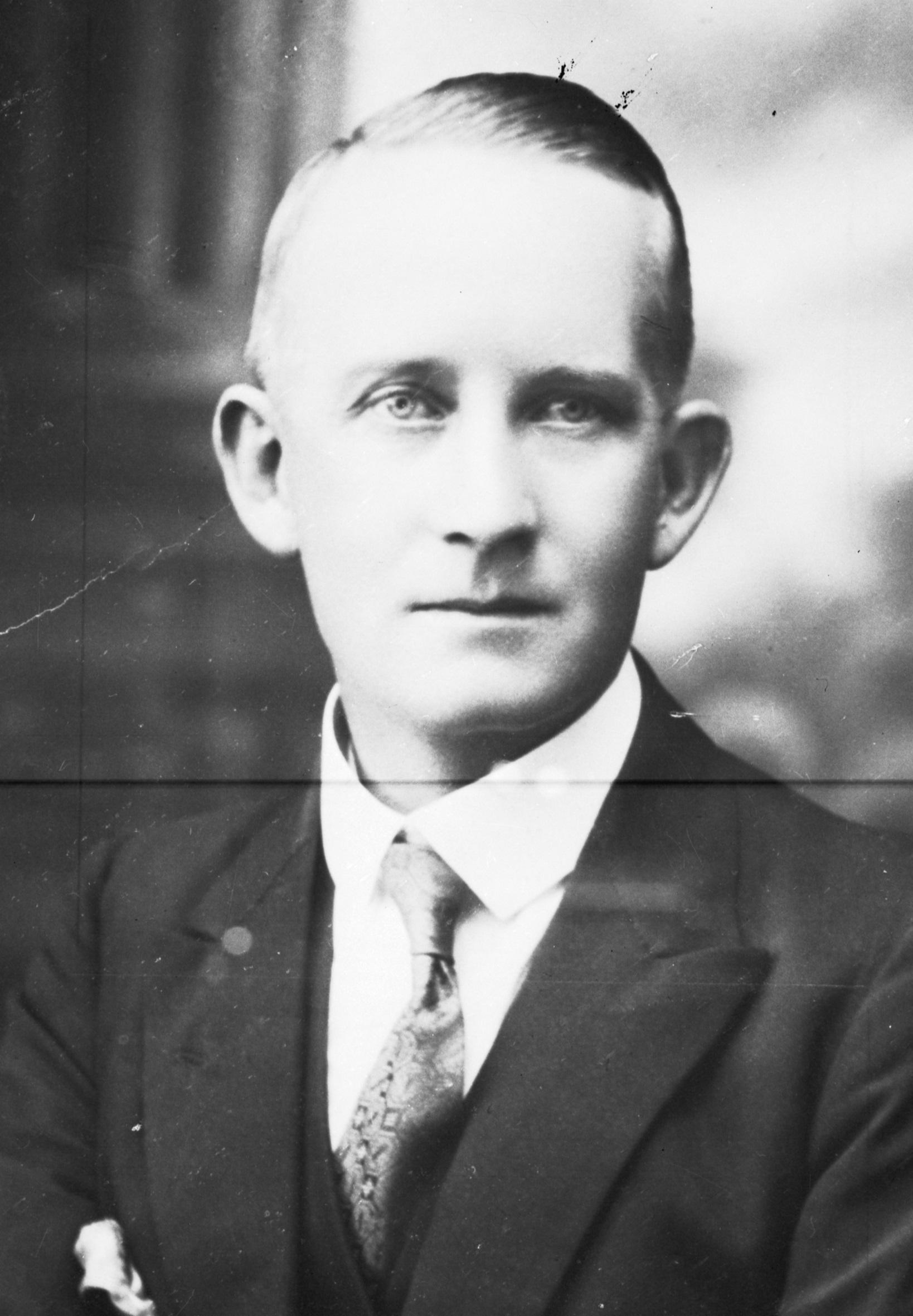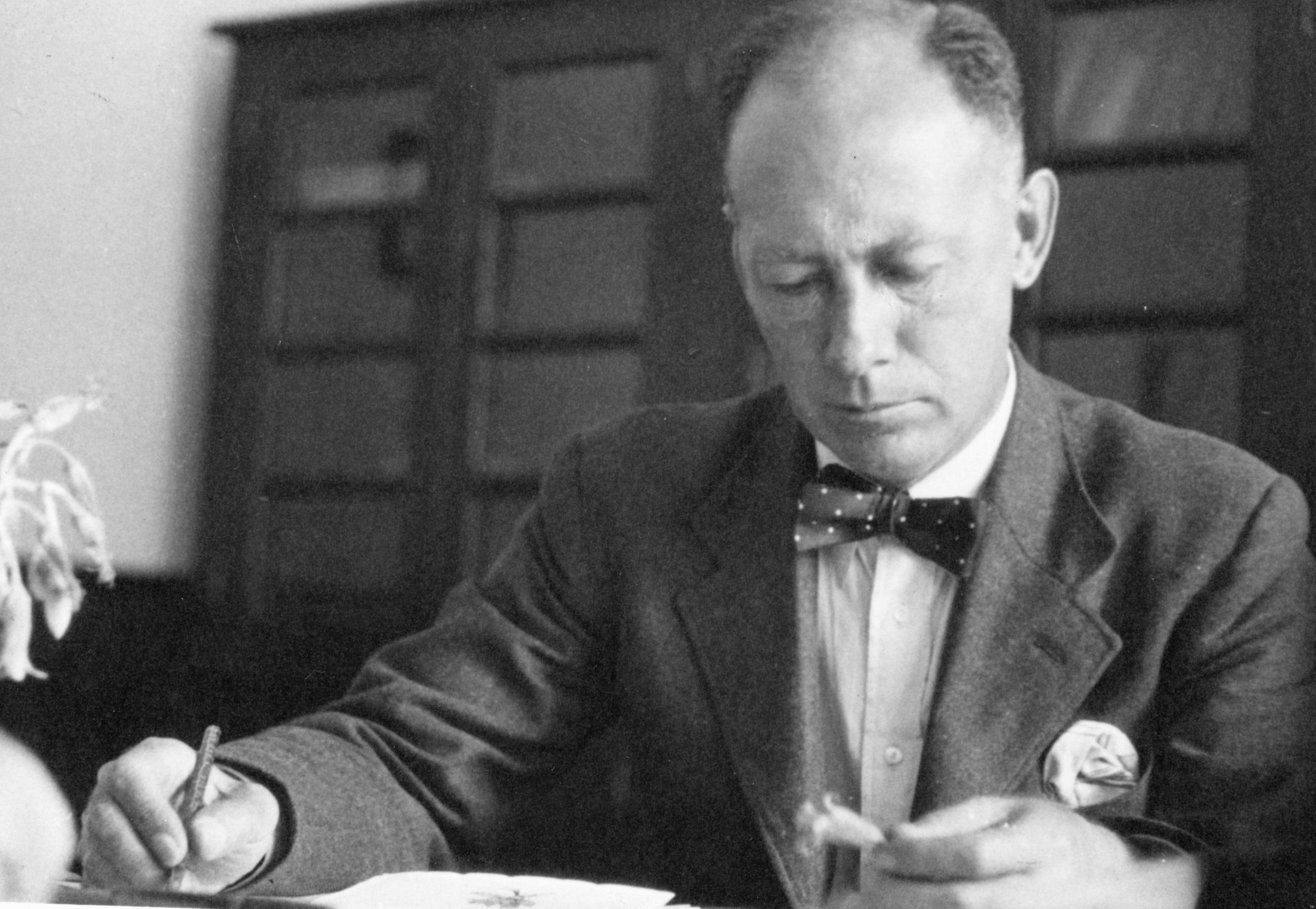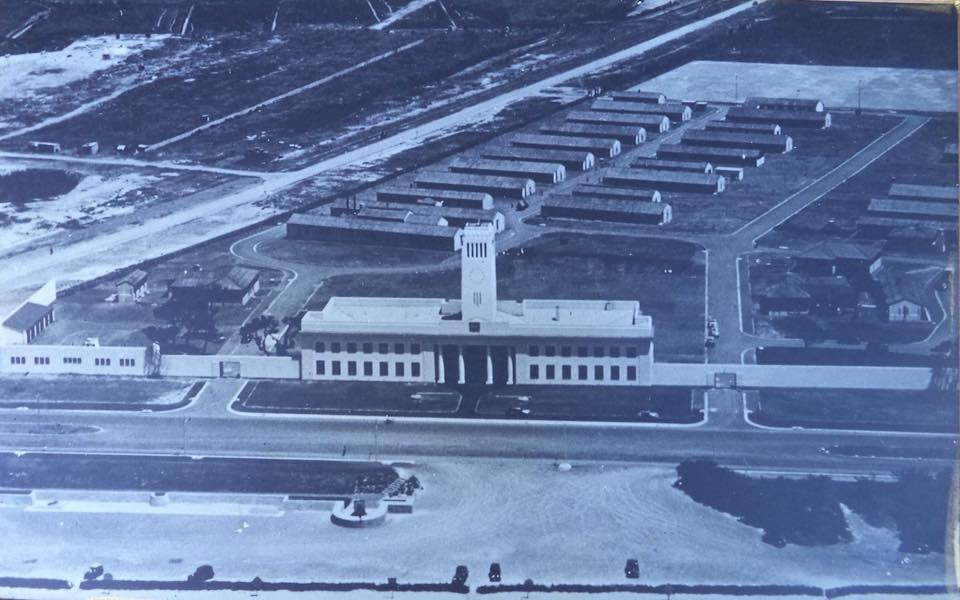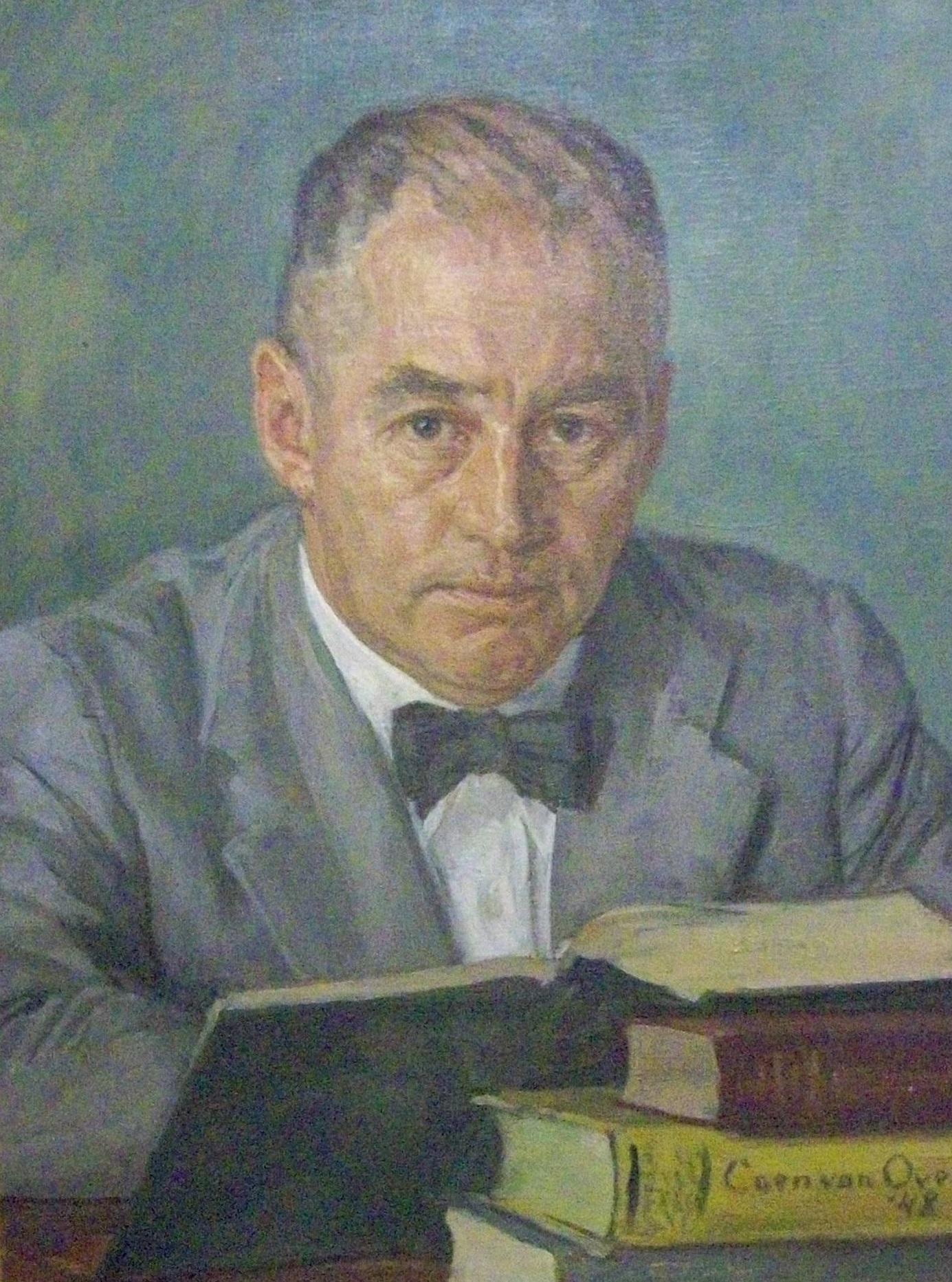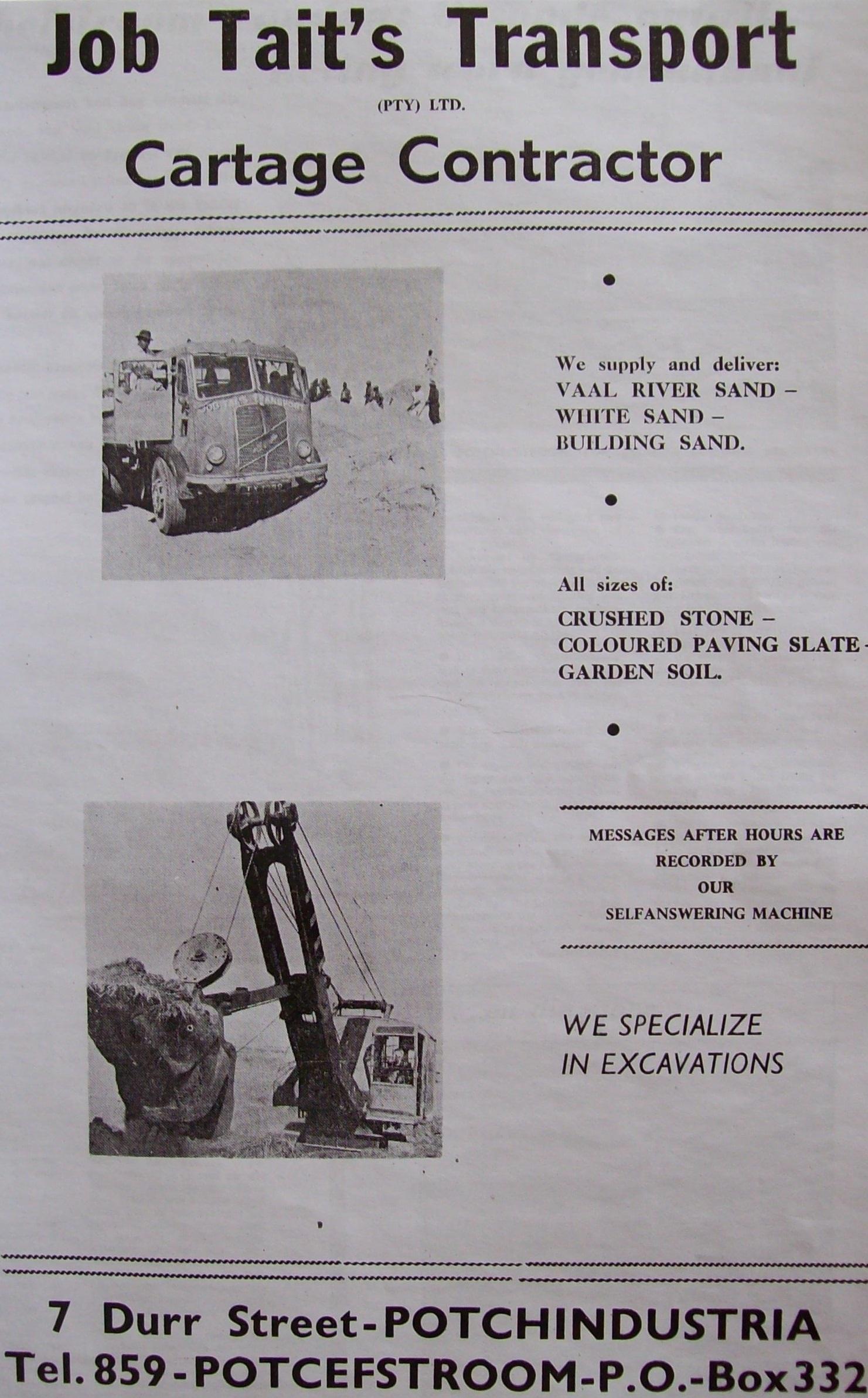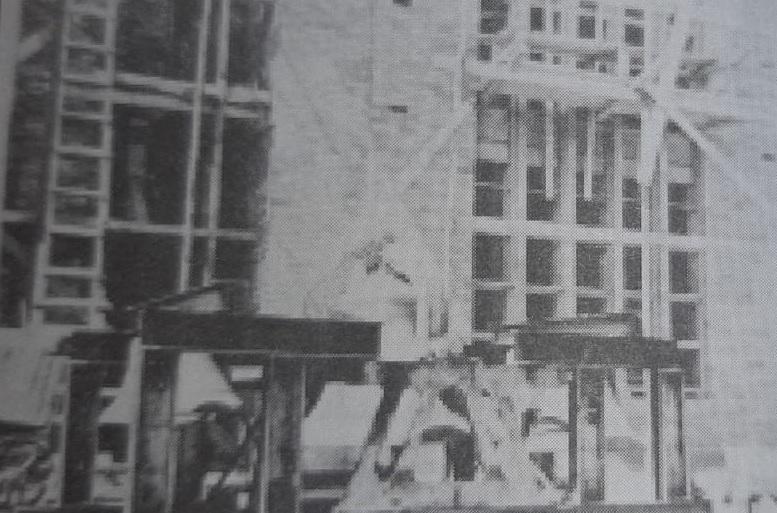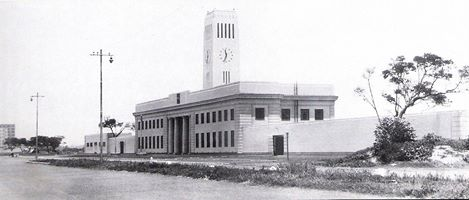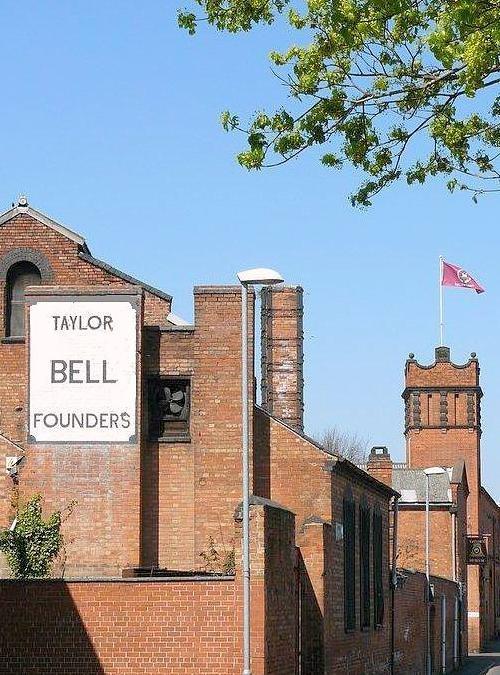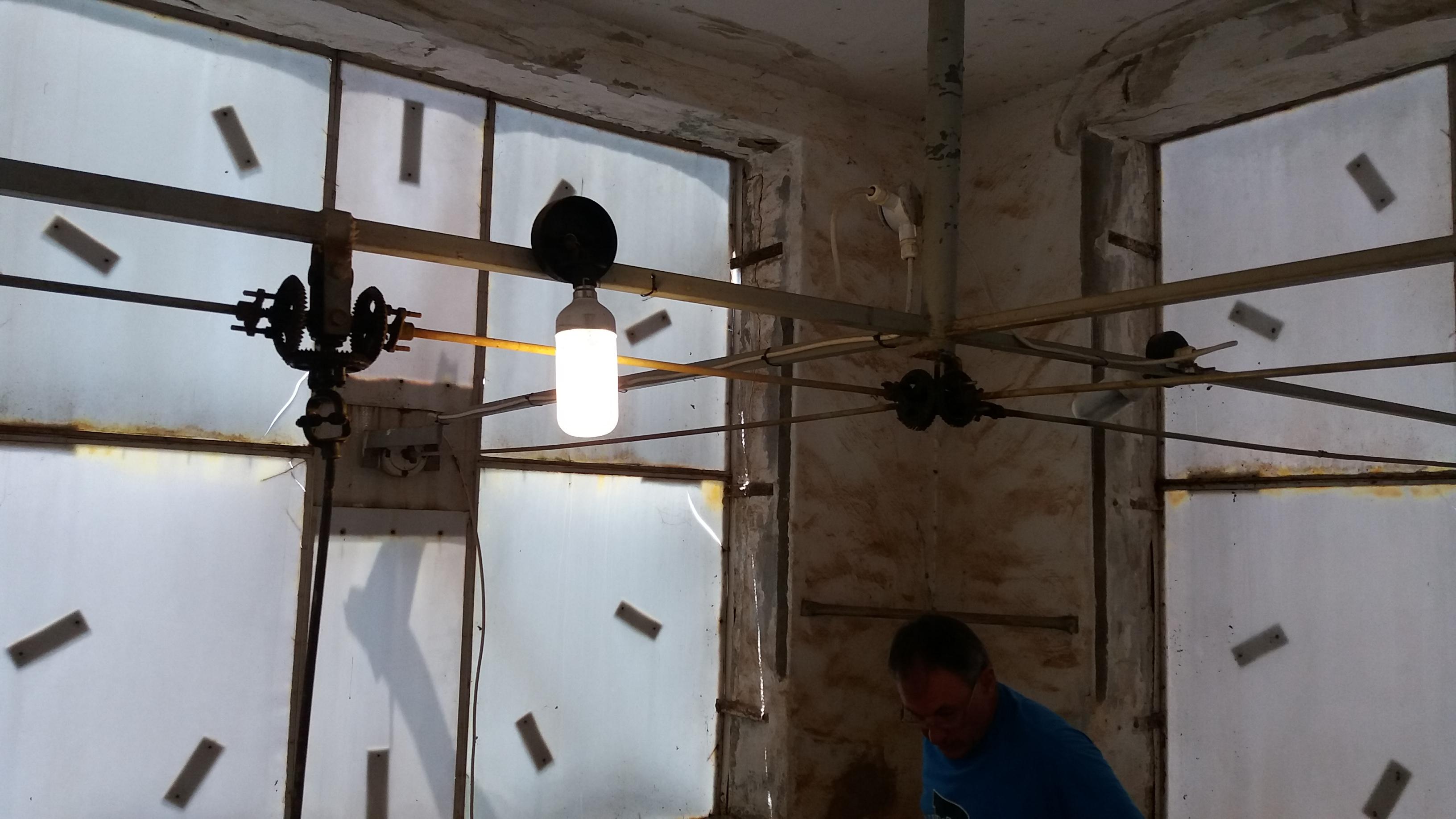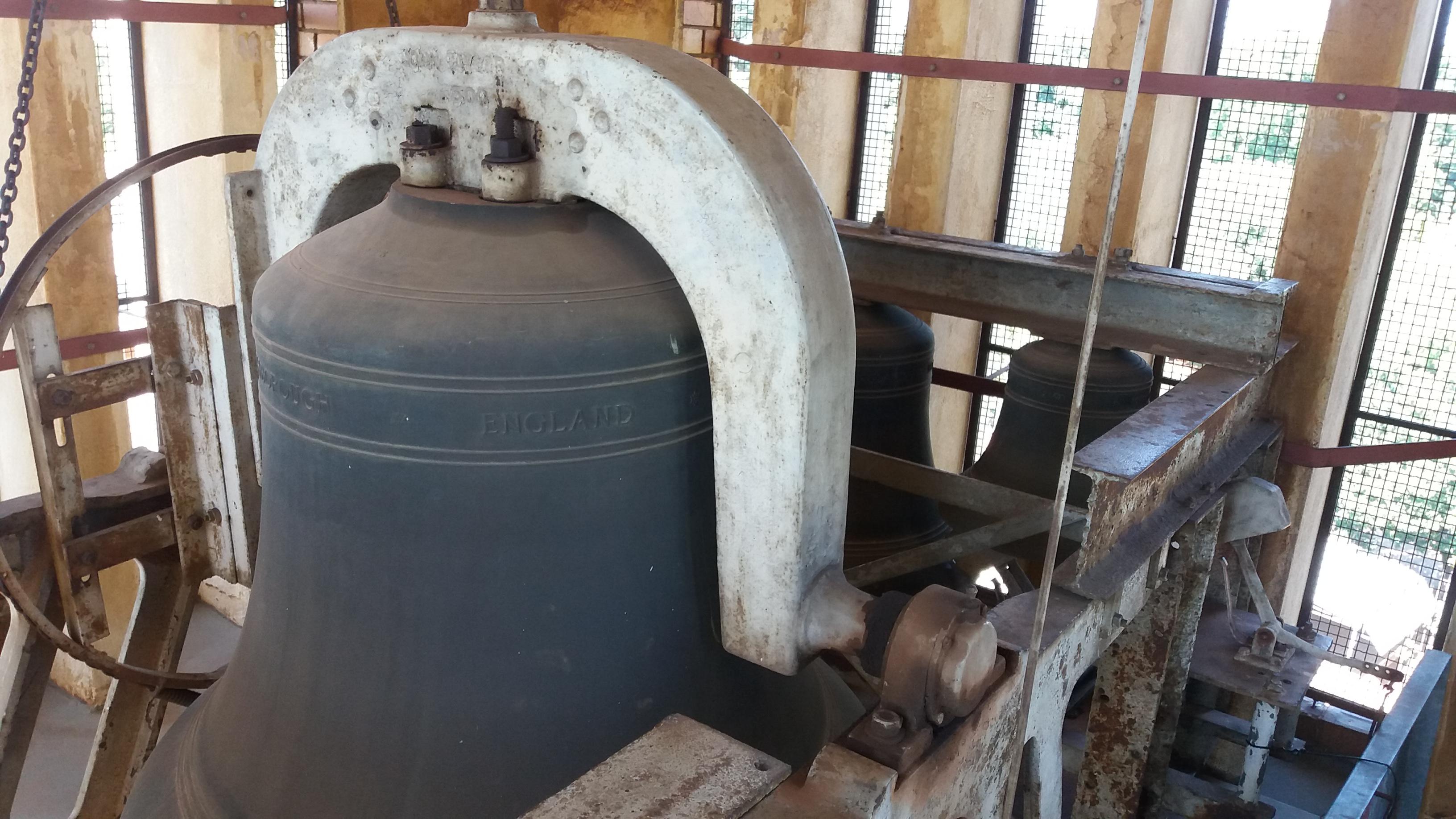
Disclaimer: Any views expressed by individuals and organisations are their own and do not in any way represent the views of The Heritage Portal. If you find any mistakes or historical inaccuracies, please contact the editor.
The Afrikaans version of this article appears on Lennie's blog. Click here to read.
With the quiet of the past few days, one can probably hear the only working clock with bells in the tower of a church in Potchefstroom from kilometres away. That is the clock of the Reformed Church (RC) Potchefstroom Die Bult. This clock has a story with many twists and turns, starting its life in Great Britain and reaching Potchefstroom via Durban.
RC Potchefstroom Die Bult shares its church building with the Theological School of the Reformed Church on the corner of Borcherd Street and Thabo Mbeki Drive. The building was designed by the well-known South African architect Gerhard Moerdijk. After the foundation stone was laid on 2 February 1952 by Prof SP van der Walt, the church was officially inaugurated on 18 October 1952.
The third Theological School of the Reformed Church was designed by Gerhard Moerdijk and opened in 1952. The building was erected in conjunction with the Reformed Church, Potchefstroom-North (as RC Die Bult was previously known). The church was to serve as a meeting place for the synod, while the school, administrative offices, library and archives were housed in the same building.
In 2011 RC Potchefstroom-Noord amalgamated with RC Noordbrug to form RC Potchefstroom Die Bult.
The remarkable story of the church clock and its bells were recorded in a newsletter of the RC Potchefstroom-Noord, published in September 1974. It was written by Prof SP van der Walt, the huge driving force behind the acquisition of the clock and bells.
The Potchefstroom Herald republished this article in its edition of 7 January 1975:
The idea to acquire a clock and bells came to Prof SP van der Walt in 1949 during a visit to Calvin College in Grand Rapids, where similar chimes in the tower of the library building of the institution were quite moving to him. He immediately thought that it would be fitting if the Theological School in Potchefstroom could have similar chimes.
The later Prof Sarel Petrus van der Walt (1908-1994) ministered at the RC Potchefstroom-Noord from 1946 to 1950. In 1949 he represented the Reformed Church at a synod of the Christian Reformed Church of America. After he had retired in 1973 as professor in Theology, he was the head of the office of the Potchefstroom University for Christian Higher Education (PU for CHE) at Vanderbijlpark at its Vaal River Branch. (NWU Archives and Museum)
Prof Van der Walt started to campaign for the installation of a church clock and bells. After he had returned from overseas he suggested to Prof JP van der Merwe that the donation of £200 (R400) he had made for an artistic window in the church, should be used for a clock. Prof Van der Merwe agreed to this.
Prof JP (Bokkie) van der Merwe, who donated money to install an artistic window in the church was persuaded by Prof SP van der Walt to rather use this for a clock. Prof Van der Merwe was appointed at the Potchefstroom University College (PUC) in 1925 to teach economic subjects. In 1941 he became the first dean of the Faculty of Economic and Managerial Sciences and died in 1952. (NWU Archives and Museum)
All the way from Durban
One day Prof APG Goossens told Prof Van der Walt about a huge bell with smaller bells that were stored in the goods shed of the Durban station.
Prof AP Goossens (1896-1970) came to Potchefstroom in 1932 as a lecturer in Botany at the PUC. According to his son, Prof Antoon Goossens, he was the founder of a regiment for the northern universities in approximately 1949, at the request of a general of the South African Army. This was named 1 Observation Battery. It was later divided in three regiments for each of the northern Afrikaans universities: Tukkies, Pukke and Kovsies. He also was an honorary colonel of the Regiment Potchefstroom University. Through his association with the Army he most likely came to hear about the clock. (NWU Archives and Museum)
The Newsletter continued:
The story was that in the headquarters of the Army in Snell Parade, Durban, there was a square tower. During the Second World War the Army realised that this tower would be an easy target for enemy ships and therefore the tower was demolished and the clock and bells removed.
He did not know what happened to the clockwork of the clock, but the four bells of the chimes and the large bell have been standing in the goods shed. The railways intended to sell it for scrap and then all would be melted. We had to immediately start negotiations, since the advertisement for the jumble sale was already being prepared.
This all happened in 1949.
The headquarters of Natal Command was erected on land donated by the city council of Durban to the Army on 12 February 1937 and was known as “The White House”. This building stands at Battery Beach, where a battery of cannon stood for many years, hence the name. On this photo the cannons are still visible in front of the building. See 29°50'17.99" S 31°02'05.68" E. The clock tower was demolished on purpose by the Army during the Second World War after German submarines were observed near the South African coastline. The tower was visible from 15 km out at sea and would have been an ideal target for the submarines to attack the Army headquarters. Natal Command was terminated in 2003 and the building, although dilapidated, still stands abandoned without its tower. (Derek Austin)
The contractor, TH Bolton, already started building the tower and he was asked for the time being to postpone the completion of the project.
Prof Van der Walt travelled to Durban to negotiate with the railway authorities, but found out it was almost too late to acquire the clock. From there he had to go to Pretoria to acquire as much information about the possible transaction as he could gather.
The Herald continues:
One matter that was in the favour of the church council, was that the church had to get a clock and that the government did not want to see any money flowing out of the country. Therefore they had to make haste.
Prof Van der Walt engaged the help of the then Member of Parliament for Potchefstroom, Dr JH Steyn, who accompanied him to the Union Buildings in Pretoria to find out who they should approach. They first went to Minister JC Erasmus, Minister of Defence, because the articles came from the Army Headquarters. He was very helpful, but after making enquiries it appeared that his department did not have any knowledge of the clock.
Dr Jan Steyn (1902-1983) was Member of Parliament for Potchefstroom from 1948 to 1966. He was not a resident of Potchefstroom, but made much effort for his constituency. He played a large role to achieve the independence of the PU for CHE in 1951 and also endeavoured to have the Boskop Dam built. This photo is of a painting of him in possession of the Ferdinand Postma Library at the North-West University (previously PU for CHE). He never married and bequeathed documents and other possessions the Library.
From pillar to post
He suggested that Minister Ben Schoeman of the Department of Labour be approached, since Housing and Public Works then formed part of that department. He was also very helpful, but told them that his department has no knowledge of the clock and that it does not appear on any inventory.
The Herald continues:
Eventually they saw Minister NC Havenga, Minister of Finances. Prof Van der Walt made an application to him to buy the clocks because that should imply a saving in currency because art objects could certainly not be melted for the recycling of copper. The argument of the minister was irrefutable: how can I sell something that I do not have? The auditor general would immediately embarrass his department. He wanted to help, but could not.
Then Mr Isak Meyer, Secretary of the Treasury, came with a brilliant idea and suggested to Minister Havenga: let us charge storage to the church for something that has been standing on government property for eleven years. Immediately Minister Havenga answered: what would you be willing to pay for storage for so many years?
Prof Van der Walt answered: one hundred pound. The amount was accepted and permission was received to remove everything from the goods shed of the railways as soon as possible.
The transport services of Mr Job Tait of Potchefstroom was engaged and two trucks were sent to fetch the load. There were numerous crates with the clockwork, the electrical motors, steel frames of the windows, steel ladders to climb up the tower and then the five bells within their heavy steel frame.
Back in Potchefstroom everything was unloaded. The truck was pulled up against a large heap of sand and the tipper was slowly lifted so that the frame with bells could slide onto the heap of sand, where it sank in deeply.
This advertisement for Job Tait’s Transport appeared in a special festive edition of the Potchefstroom Herald on 8 November 1963 when the newspaper celebrated its 55th birthday and the town its 125th.
The steel frame with the five bells (large bell in the middle) after it was offloaded next to the church building. The photo was published in the Feesbundel (festive volume) which was compiled for the 50th anniversary of the RC Potchefstroom-Noord in 1999.
The contractor in the meantime proceeded with the strengthening of the tower to carry the extra weight.
The frame with bells were then installed in the tower. This was accomplished by a large crane dropping it slowly into the tower from the top. Afterwards building work could continue.
The building of Natal Command shortly after completion. The clock is clearly visible and the design of the tower shows remarkable similarities with tower currently containing the clock. (Derek Austin)
The cubist design of Gerhard Moerdijk for the Theological School and church. According to him the eastern façade of the building is a metaphor for the Wall of the Reformers, a monument in Geneva, Switzerland. The eastern façade therefore symbolises the Reformation.
Another large job still waited. The crates with the clockwork were not sealed and in need of fitting and repairing. Everything was taken to Pretoria to a clockmaker who specialised in bell tower clocks. He fitted everything together and miraculously it was complete! He also cleaned the mechanisms and made some small changes to modernise it. His comment was that the clock should outlast many generations. Everything was installed in the tower, the clock faces of unbreakable material was fitted and chimes tuned. To ring the bell an electrical motor was installed to control it with the push of a button.
In the end the transport costs, renting of the crane and repair work cost more than the “purchase price”, but it was more than worth the trouble.
It is estimated that, apart from the storage of £100, transport costs, repair costs and the renting of the crane amounted a further £500.
80 years later
In 2017, the year the clock was 80 years old, the former churchwarden, Piet van Maarleveld, asked Prof Chris van der Walt to ascertain what repairs were needed and Prof Jan de Kock was approached to do the repairs.
Until shortly before he passed away in 2017 the well-known Potchefstroom photographer, Piet van Maarleveld, for about 20 years took care of the clock and often had to climb up the 20 m high tower to set it. He was 89 years old when he died. He lived across from the church in Thabo Mbeki Drive and here he is seen standing in his garden with the tower in the background.
Apart from the fact that he is a professor in Electrical Engineering, Prof De Kock for many years worked for a clockmaker in Cape Town who headed the repair work of clocks at the Cultural Historic Museum in Cape Town.
In the three years that he was busy with repairs to and restoration of the clock, he not only examined the clock in detail, but did extensive research about it.
On the large bell he found the name of the foundry that casted the bells, namely “John Taylor & Co”. This foundry is still in existence and on their website Prof De Kock discovered that the bells had been cast in 1937.
The bells and clock were ordered by the Durban Active Citizen Force of the Union Defence Force. It was to be installed in a building in Old Fort Road in Durban, across from the Kingsmead Stadium. In 1937 the headquarters of Natal Command were being built on the Snell Parade and the bells and clock were actually installed in the tower of this building.
The long history of John Taylor & Co reaches back to the 14th century when a bell foundry existed near the current foundry. By 1784 the foundry was in the possession of the Taylors and in 1839 it moved to Loughborough in Leicestershire in Great Britain. Since 1859 the foundry has been at the current premises. (John Taylor & Co.)
Everybody in the vicinity of the church recently noticed that the clock is ringing on time, but the hands were removed. This is the only visible sign of the repairs in progress.
According to Prof De Kock the hands, of which the one for hours is 105 cm long and the one for minutes 126 cm, have worn out and needed repairs. It must also be sanded and painted.
Prof Jan de Kock, which has undertaken the extensive repair of the clock, busy at his lathe where he is making a new part for the clock. (Hanke de Kock)
One of the electrical motors driving the clock had to be replaced. Bolts attaching the large bell to its yoke had to be replaced after they had shown cracks. The clock face, made from white transparent Perspex developed cracks and will have to be replaced. Each of the four clock faces consists of six plates that fits into a frame like glass planes in a window. New Perspex plates have already been made, but can only be installed after the old ones have been removed, rust on the frames sanded down and the frames painted. This all has to happen in situ in the tower!
Gears situated behind the clock faces that control the hour hand of the clock are at present being serviced. Prof De Kock explains that the minute hands of the four clock faces are controlled by the clock, but a gear system, behind each of the four clock faces, convert the minutes to hours to control the hour hand. After decades these four gear systems are not synchronised anymore and parts had to be replaced to repair it. It was of no use to set the clock before those gear systems had been restored. The minute hands of the clock could be set correctly but the hour hands differed as much as an hour from each other.
The largest of the five bells of the RC Potchefstroom Die Bult weighs 1 244 kg and is 128,2 cm in diameter at the bottom edge. Two of the four bolts that attach the clock to its yoke is visible. These bolts recently had to be replaced urgently after they had shown cracks. (Jan de Kock)
Cracks in the Perspex of the clock faces are clearly visible. The small gear systems in the middle of the each of the four clock faces that controls the hour hand, are at present being repaired. On the photo is Prof Chris van der Walt, who continually see to it that the clock is on time. (Jan de Kock)
Prof De Kock estimates that the repairs to the clock should be concluded by the end of the year. Then the residents of Potchefstroom – especially those living in the Bult area – can again rely on the accuracy of the (visible) clock.
Facts about the clock and bells given by Prof De Kock:
- The clock has five bells.
- The bells were cast in 1937 by John Taylor & Co of Loughborough in Leicestershire, Great Britain.
- The largest bell weighs 1 244 kg and is 128,2 cm in diameter at its widest.
- Weight and diameter of the other four bells: 406 kg – 86,0 cm, 204 kg – 65,5 cm, 152 kg – 59,6 cm, 117 kg – 55,5 cm
- The large bell is the only one that can swing. It is controlled by an electric motor rotating a wheel that is connected to a chain that swings the bell about 30° so that the clapper can hit the bell. The mechanism that controls this swinging movement has been out of order for many years and must still be repaired. The bell, however, also has a hammer that hits against the side of the bell to count down the hours.
- The other bells are only rung by hammers, which are mechanically controlled by the clock to hit against the side of the bell. One of the hammers of the smaller bells is visible to the bottom right in the picture of the large bell.
- The melody which the clock plays every hour is the same as the one played by the well-known Big Ben of London and is known as the “Westminster quarters”. Listen here how it sounds.
- It was ascertained that the clockwork was made by Smith of Derby, but the hour train has been replaced by one by Hörz of Ulm in Germany.
- The clock face is about 2,5 x 2,5 m in size.
- The hour hand is 105 cm long.
- The minute hand is 126 cm long.
- The tower is 20,8 m in height to its highest point and while it was constructed it had to be strengthened with concrete to carry the weight of the clock and bells.
About the author: Somewhere in her late teens Lennie realised that writing came easy to her and now, many decades later, she has written and co-written nine books on various aspects of the history of Potchefstroom. This is apart from various supplements and numerous articles, mostly published in the Potchefstroom Herald. Two of her books are available on amazon.com. One is a biography on Kenneth McArthur, Olympic gold medallist in the marathon of 1912. The other is an Afrikaans Christian novel. The supplement on the history of the Herald, at the time of its centenary in 2008, led to a Master’s degree in Communication Studies and one of the books, on NWU PUK Arts, led to a PhD in history. In the process of all this writing she has accumulated a large stash of information and photos on the history of Potchefstroom.
Sources not mentioned in text:
- Old Natal Military Command Headquarters - The White House via Artefacts, visited 2020-03-30.
- JK Jooste, An appraisal of selected examples of Gerhard Moerdijk’s work (1890-1958), Unpublished article, Department of Architecture, Technikon Pretoria, 2000.
- Stark Reality of Natal Command, Daily News, visited 2020-03-30.
- Unless otherwise mentioned photos were taken by the author.
Comments will load below. If for any reason none appear click here for some troubleshooting tips. If you would like to post a comment and need instructions click here.

